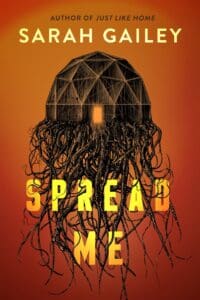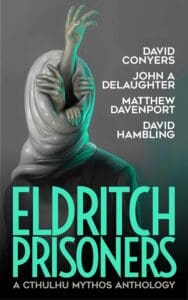
Synopsis
Nonsense Words by D. Matthew Urban
An aging professor of ancient history strikes up a friendship with her new colleague, Dr. Paul Duncan, a scholar of undecipherable inscriptions. As she finds herself drawn into Dr. Duncan’s life—his brilliant wife and mystical daughters, frightened students and uncanny associates—darker forces behind his research emerge, plunging her into a nightmare of mythical absurdity and ritualistic death. Dark academia meets cosmic horror in Nonsense Words, where the incomprehensible is granted a conjured form—but too much imagination can be a dangerous thing. If the cosmos is nonsense, merely a divine or demonic joke, will she live to have the last laugh, or will she die a punchline?
Bone Light by Holly Lyn Walrath
An icy surf batters Bone Light as its beacon calls to weary souls at sea. This edifice built of bone and wretchedness sits atop a cursed rock, surrounded by death, watched over by the ghosts of light-keepers past. Their records tell of the inhospitable environment, but it is Mary Long’s writings that show the heart. Misfortune necessitates the arrival of her dear Ida, laying bear to the obstacles that shaped their history—a husband and taboo among them. These log entries illuminate Mary’s world—the banality, the heartbreak, the magic. In Bone Light, a beacon of death might finally be the thing to give life to a long-denied romance.
Review
Those of us old enough to remember the split singles of the punk days know the glory of placing two disparate songs back to back, the tensions created, the fascinating parallels. It’s also a great reminder that some of the most important creative choices are actually editorial choices: placing this beside that creates interesting resonances, shocking contrasts, or sets them in subtle conversation.
Split Scream vol 4, the latest in the series that places two novelettes by two authors side by side, is a sterling example of this particular form of editorial genius.
The first story, “Nonsense Words,” drops us into dark academia by way of the mundane university life as experienced by our narrator, a professor nearing the end of her career who strikes up a friendship with the new, charismatic assistant professor across the hall. Paul Duncan is bright and imaginative, and his family is lovely, even if his daughters’ weird girl energy is a little extreme.
But soon things start to turn sinister as students complain about Paul’s out of class behavior, and our narrator has several unsettling experiences with Paul and his family. And that’s all before they find the bodies.
There’s a certain air of Greek tragedy to “Nonsense Words,” and a peculiar narrative distance from the horrors described, as out narrator never quite responds as we think she might or even should, and the horror unfolds just as we’ve been told it would from the beginning.
And yet, the horror seems almost beside the point. Rather, it’s the incomprehensibility of the violence that seems most important, the way that it stretches the imagination, and we feel our narrator being seduced by the possibilities of the imagination, having brushed up against the outer edges of a dangerous cult and coming away somehow the better for it.
It’s a haunting and oddly beautiful investigation into language, reason, imagination, and violence.
The second tale, “Bone Light,” takes the form of journal entries as Mary and her husband take up residence on Bone Light, a lighthouse standing over a particularly treacherous bit of shoreline.
But the little island that is home to Bone Light is haunted by generations of the dead, and soon the line between the living and the dead grows thin. Mary’s husband dies in a mysterious accident, and Mary’s childhood friend Ida comes to the island.
What follows is a sapphic tale of witchcraft and haunting as the two women battle the elements, sexist lighthouse inspectors, roving bands of thieves, and generations of angry ghosts.
Not unlike “Nonsense Words,” this story ends on a bittersweet note, the horror acknowledged but somehow laid to rest.
Both stories paint remarkably clear characters in very brief spaces, in language that is both lyrical and precise, and there’s a very real spark given off by holding the two story side by side. These two very different stories about very different women experiencing the occult in very different ways feel as if they are in conversation, and I for one was happy to be able to listen in.








Leave a Reply